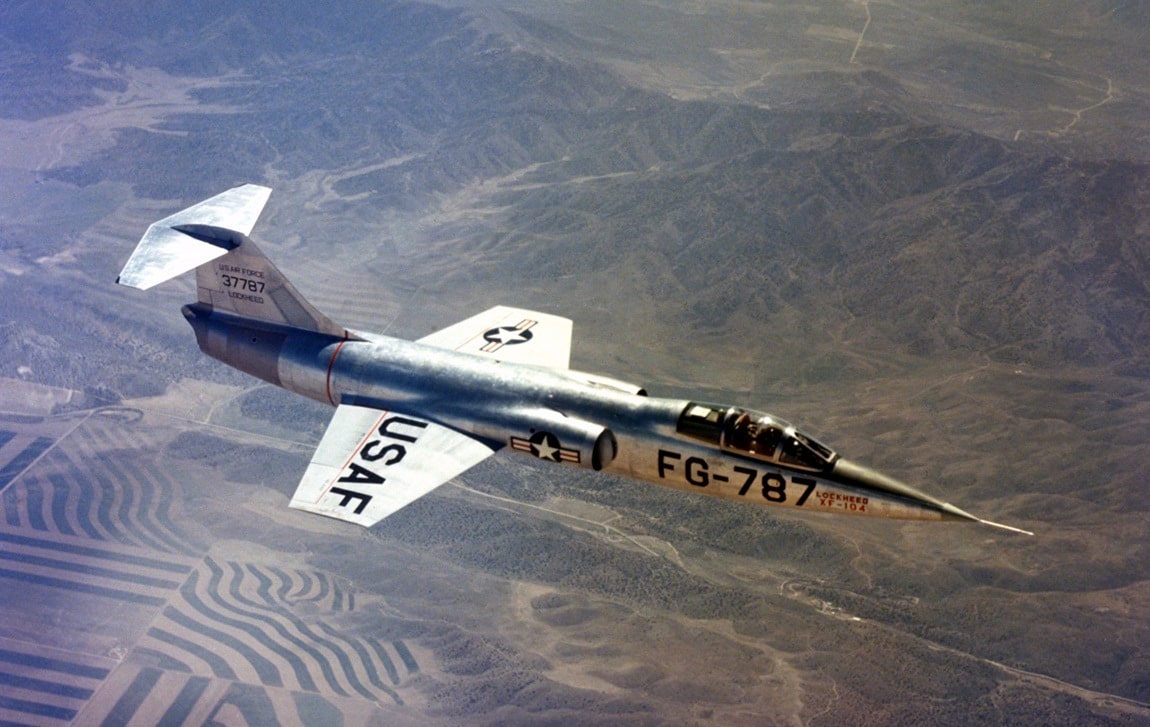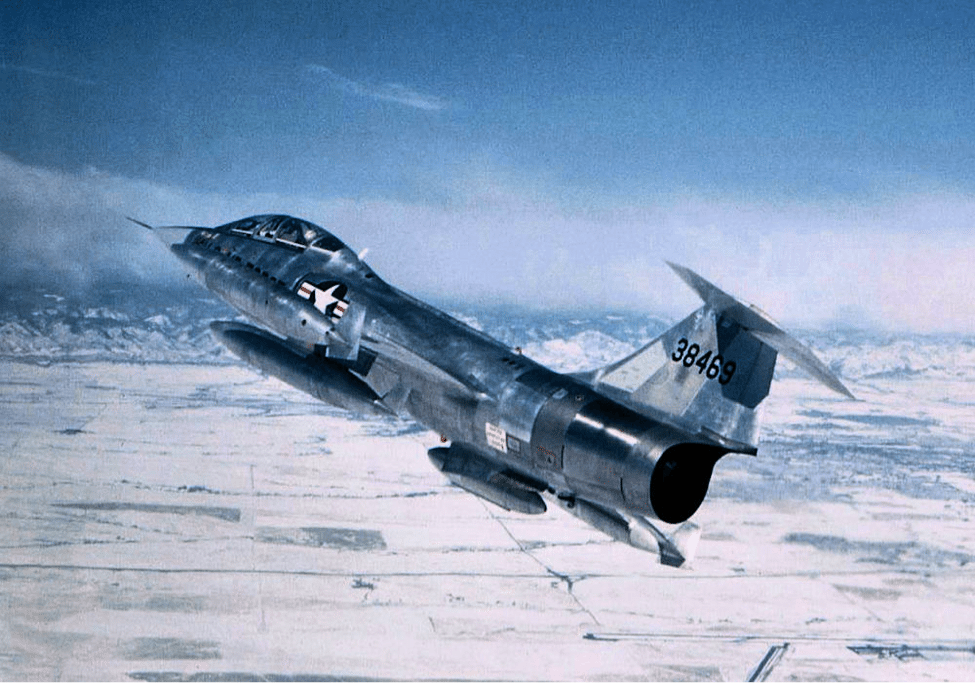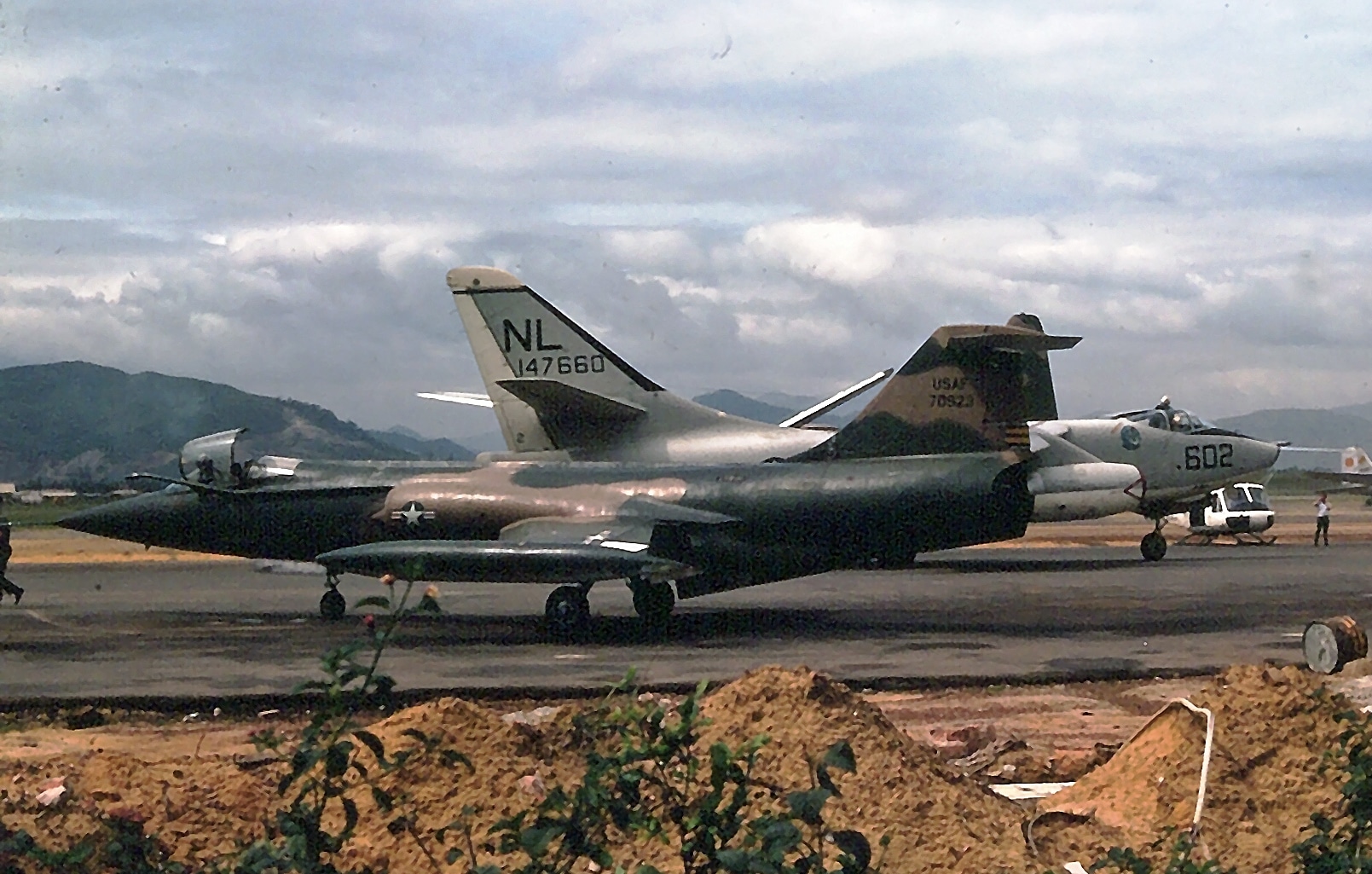Lockheed’s F-104 Was Both Built by and Operated by NATO Countries For Nearly 50 Years
On 4 March 1954, after less than year had elapsed since contracted by the Unites States Air Force to design and build it, the first prototype Lockheed F-104 Starfighter took to the sky at Edwards Air Force Base in California.

All-Star Design Team
Known by nicknames like “zipper” and “lawn dart” but none so much as “the missile with a man in it”, the F-104 was designed by the famous Lockheed engineer Clarence “Kelly” Johnson. Later to be associated with such other notable aircraft as the SR-71 Blackbird and its derivatives, as well as the U-2 and the F-117 Nighthawk, Johnson basically built the smallest and lowest drag airplane possible around the most powerful engine available- the General Electric J79.

Creating a Need for a Breakthrough Design
Lockheed and Johnson presented the design for the F-104 to the Air Force in November of 1952. Based on the design alone, the Air Force created a General Operating Requirement (GOR) for a lightweight fighter to replace the North American F-100 Super Sabre. Although three other designs were contemplated, Lockheed was granted a development contract in March of 1953 for two prototypes to be designated XF-104.

Raw Power and Mods to Control It
Capable of sustaining speeds above Mach 2 and reaching altitudes as high as 48,000 feet in less time than it has taken you to read this far, the raw performance of the F-104 was impressive right from the beginning. The usual refinements were defined and incorporated into the design between prototypes and production aircraft, including landing gear and intake modifications, additional airframe strengthening, and the addition of a ventral fin to improve directional stability. These modifications to the pre-production F-104 prototypes yielded the initial production model. The first F-104A Starfighter entered service with the 83rd Fighter Interceptor Wing (FIW) on 26 January 1958.

Air Defense in Name and Mission
The 83rd, based at Hamilton Air Force Base in California, attained operational status on 20 February 1958. A total of four Air Defense Command (ADC) units were equipped with the F-104A. After a rash of accidents, the Air Force evaluated the A-model Starfighter and made the decision to reduce orders for the fighter from 722 examples to only 155. The F-104As were eventually transferred to Air National Guard (ANG) units.

The Choice for TAC
The next variant of the design, the F-104C, entered service with the US Air Force Tactical Air Command (TAC) as a multi-role fighter and fighter-bomber. In September of 1958, F-104Cs first equipped the 479th Tactical Fighter Wing based at George Air Force Base in California.

To War in Vietnam
F-104C Starfighters took a limited part in the Vietnam War. The 476th Tactical Fighter Squadron arrived in-country first, followed by the 436th Tactical Fighter Squadron three months later. Between April of 1965 and October of 1965, F-104Cs from these two squadrons flew a total of 2,935 combat sorties and lost a total of five Starfighters (to all causes).


[…] During the mid-1970s the German Luftwaffe was looking for a replacement for their license-built Lockheed F-104G Starfighter fighter bombers. Vought’s A-7 Corsair II was one aircraft in consideration to be that […]
a great airframe…….